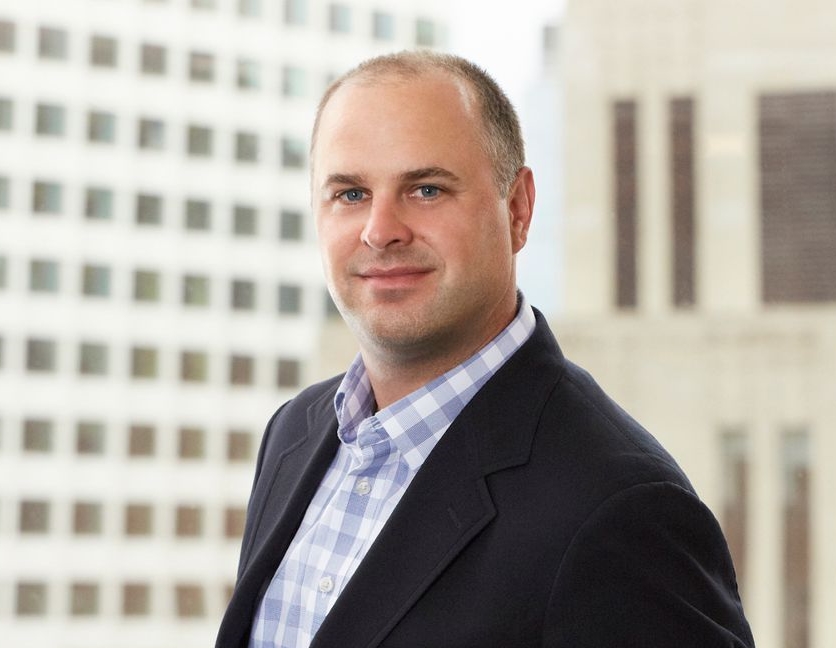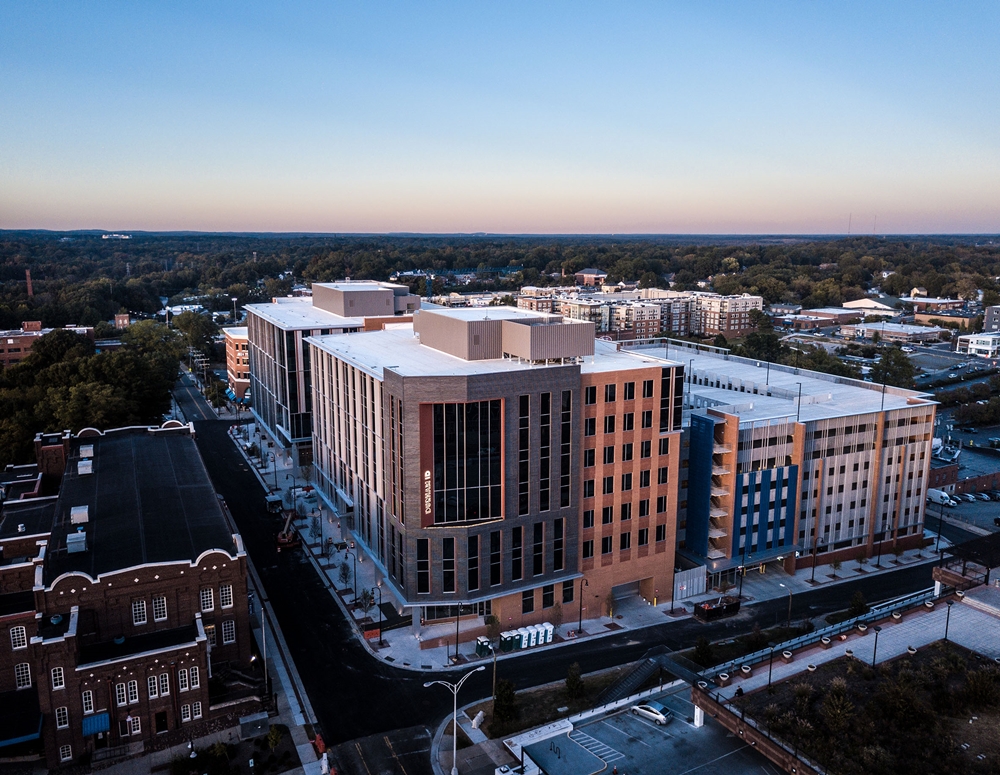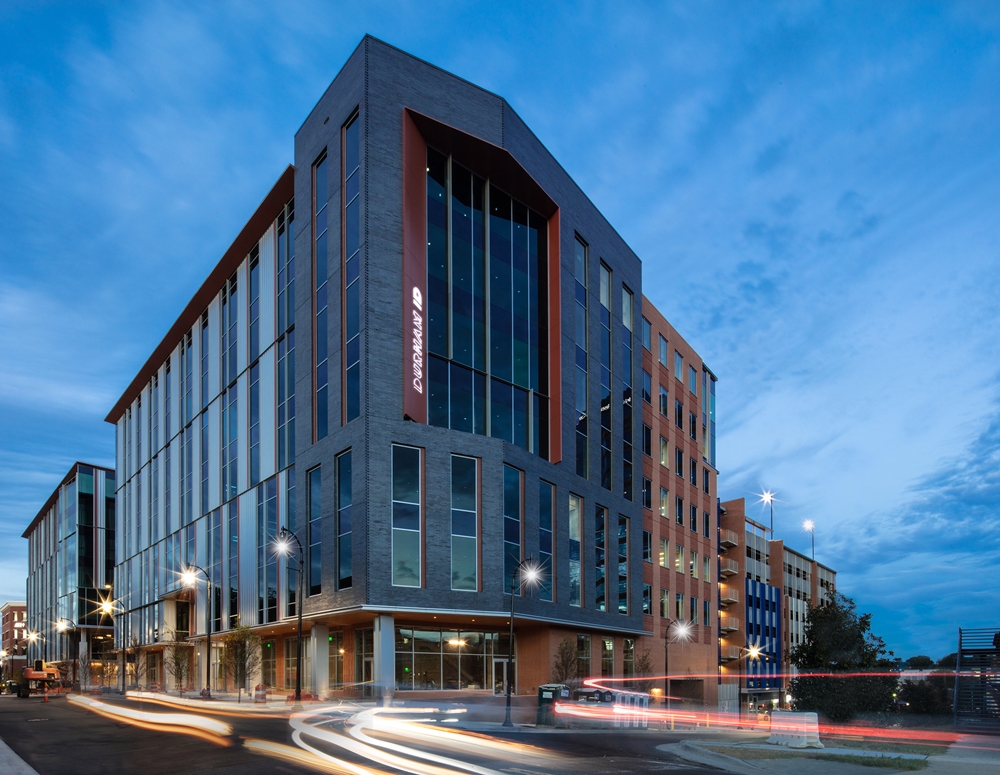Life Sciences Shows Pandemic-Proof Potential
Longfellow Real Estate Partners’ Adam Sichol discusses the sector’s strengths, new opportunities and the role niche collaborations play in the long run.
Real estate has had to adapt amid the coronavirus crisis, resulting in permanent changes to most of the sectors. The life sciences industry turned out to be strong in the face of pandemic-induced turbulences, although significant shifts might alter the subsector in the long term. Longfellow Real Estate Partners—one of the largest life sciences real estate developers and managers in the U.S.—has managed to remain afloat during the pandemic. The company continued working on its upcoming Durham.ID project and expanding its 5 million-square-foot portfolio.
Longfellow has also partnered with institutions such as Harvard, Duke and Stanford universities over the years. In an interview with Commercial Property Executive, Co-Founder & Managing Partner Adam Sichol talks about how these collaborations enhance life sciences spaces and capabilities across core markets, and the way in which tenant experience can be elevated through innovative approaches that defy the traditionally rigid lab designs. He also discusses growth amid coronavirus-created unrest and life sciences opportunities across key U.S. markets.
READ ALSO: Life Sciences Generates Abundant Opportunities for CRE
Longfellow Real Estate Partners’ portfolio includes properties located in the country’s most innovative clusters. What does it take to stay in the loop with the latest amenities, trends, technologies and advances in the life sciences field?

Adam Sichol, Co-Founder & Managing Partner, Longfellow Real Estate Partners. Image courtesy of Longfellow Real Estate Partners
Sichol: There are two components to our process. On the one hand, we closely examine and integrate learnings from the campuses of big technology, life sciences and innovation companies in our space—from Google and Facebook to Genentech. On the other hand, we pay close attention to feedback from our tenants, large and small, so we can adjust and customize our users’ spaces according to their needs.
Placemaking and reducing friction for our tenants and their employees is key to the way we think about creating effective spaces. We don’t just look at what the big users of space are doing, but we’ve carved out a unique model for life sciences development that also incorporates ideas from the hospitality industry and even from multifamily models.
Last year, you launched a suite of signature amenities dubbed Elevate throughout your buildings. In what way does a hospitality program redefine the tenant experience?
Particularly for life sciences real estate, we’re really developing a new model here. These kinds of campuses have long been built as relatively nondescript offices, with buildings and tenants siloed from one another. Our projects are infusing high-quality lab spaces with the kind of amenities and community spaces that you typically find in more mixed-use settings. This fosters a work-live-play atmosphere for our users and it also increases the collaborative potential across the ecosystem of companies working across our properties.
So, for example, we are nearing the completion of capital upgrades on one of our first projects in San Diego, a nearly 500,000-square-foot life science campus called SOVA Science District. The project will include a brewery, coffee shop, fitness center, mural program and outdoor gathering space. Similarly, at our CambridgePark Drive location in Cambridge, Mass., we partnered with well-known Cambridge food and beverage entrepreneurs, Liza Shirazi and Steve “Nookie” Postal, who will soon open a new restaurant serving our tenants in that campus and people in the broader business and residential communities nearby. So, for example, we are nearing the completion of capital upgrades on one of our first projects in San Diego, a nearly half million-square-foot life science campus called SOVA Science District. The project will include a brewery, coffee shop, fitness center, mural program and outdoor gathering spaces. Similarly, at our CambridgePark Drive location in Cambridge, Mass., we partnered with well-known Cambridge food and beverage entrepreneurs, Liza Shirazi and Steve “Nookie” Postal, who will soon open a new restaurant serving our tenants in that campus and the broader business and residential communities nearby.
So, for example, we are nearing the completion of capital upgrades on one of our first projects in San Diego, a nearly half million-square-foot life science campus called SOVA Science District. The project will include a brewery, coffee shop, fitness center, mural program and outdoor gathering spaces. Similarly, at our CambridgePark Drive location in Cambridge, Mass., we partnered with well-known Cambridge food and beverage entrepreneurs, Liza Shirazi and Steve “Nookie” Postal, who will soon open a new restaurant serving our tenants in that campus and the broader business and residential communities nearby.
In addition to building community, Elevate is about bringing services to the workplace that foster work-life balance. For instance, we provide on-site dry cleaning, car maintenance and detailing, dental care and salon services, so tenants are able to spend their weekends doing what they like to do rather than what they have to do.
Your biggest development underway is Durham.ID, a 1.7 million-square-foot campus focused on science and technology. Tell us more about this project and its impact on the market.
Sichol: Durham.ID is the first life sciences and technology park in downtown Durham, N.C. The genesis of the project is Longfellow’s collaboration with Duke University, which started 12 years ago when we helped Duke create new space for scientific research by transforming old tobacco warehouses in Durham. After two successful projects, we collaborated further to design a master plan for a new innovation district here.
The great opportunity was to create a 24/7 district for science, innovation and technology—a live-work-play campus for an influential, growing sector in the city, anchored by one of the nation’s leading research institutions. The project is a mix of existing product, adaptive reuse and ground-up construction, and includes residential and retail. It’s designed to fit into the fabric of the city—there is no entrance or exit, but rather a seamless flow of space across buildings.
READ ALSO: What’s Trending in Health-Care Design?
How has COVID-19 impacted its development?
Sichol: Within the last 60 to 90 days everyone has seen a slowdown for the benefit of public health. That being said, Durham.ID is a long-term project for Longfellow and we remain confident about our investment strategy for a couple of reasons. First, we believe the life sciences sector is well-positioned for the future, and that our proximity to a magnet for talent and innovation like Duke will continue to serve us incredibly well.
Second, Durham is a smaller, more manageable city than, say, New York or Chicago. As our tenants return to work, neither we nor they face the same challenges as 20-story buildings in larger urban downtowns—not to mention the fact that public transit is less of an issue here. We had great momentum in the market prior to COVID-19 and we anticipate continued, strong momentum during the recovery period.
What role do partnerships with educational institutions play in the life sciences office niche today?
Sichol: We view them as a critical component—and one we do really well. Collaborating with institutions like Duke, Harvard and Stanford universities and the New York Blood Center enhances our ability to think strategically and understand the long-term goals of a major nucleus for activity in a given sector.
These primary institutions give us insight into market demand and inform our planning around what types of spaces are needed, whether we’re renovating buildings for the institution specifically or building space that the institution knows is needed nearby.
It’s also worth noting that a lot of startups come out of these institutions, and our relationships give us a close understanding of how to develop and manage spaces for a full ecosystem of life sciences players, from small labs to bigger spaces for corporate players that have partnerships with the research institutions.
What growth markets are you focusing on right now, and why?
Sichol: At the moment we’re focused on our core markets: Boston, Cambridge, Raleigh-Durham, San Diego and San Francisco. Beyond these cities, which are the biggest life sciences hubs in the country, we’re gauging the opportunity for life sciences development in New York. Everything is going to be trickier after COVID-19, but New York has a lot of growth potential as a major hub for talent that lags far behind much smaller cities when it comes to life sciences real estate.
Tell us more about your business strategy during coronavirus times. How has it shifted since the pandemic began?
Sichol: The crisis has forced us to be nimble and adaptive as a property manager. Many of our tenants are doing essential work and they need to come into the office, so we had to find ways to keep spaces operational. Our strategy has been a combination of staggering workforces, instituting work-from-home models for nonessential personnel and closing public amenity areas. We also had to devise an internal system for prioritizing work tickets. Fundamentally, real estate is a people business, where a lot of things are done face-to-face. We had to shift quickly to a remote situation and quickly adapt to connecting with our tenants virtually so we can respond to their needs in a rapidly changing environment.
We also had to devise an internal system for prioritizing work tickets. Fundamentally, real estate is a people business, where a lot of things are done face-to-face. We had to shift quickly to a remote situation and quickly adapt to connecting with our tenants virtually so we can respond to their needs in a rapidly changing environment.
How has the life sciences sector changed since the COVID-19 outbreak started?
Sichol: Just like the office sector, it has changed quite a bit. The main question we are studying now is whether our users will need more or less space in the future. The jury is still out on what the changes will be, but there are surely going to be some changes to the design of tenant spaces. We have organized an internal task force to study the options, and our team is engaging closely with our tenants, architects and contractors to develop an effective solution for the future.
On a macro level, the industry looks strong at the moment. However, we need to keep in mind that companies raised a lot of money in the first quarter before the pandemic. Frankly, the sector is closely tracking what funding looks like moving forward. If it continues at the same pace, great—but if venture capitalists are raising less money or the National Institutes of Health is pulling back then we’ll all need to adjust based on the current levels of investment committed to the industry.
What do you see as the biggest challenge facing the life sciences real estate segment today?
Sichol: The first challenge for users is identifying developers and landlords with the know-how required to partner effectively with tenants in the space. Tenants need to work with firms that know how to design, build and operate labs that meet their needs. Now that COVID-19 has underscored the importance of life sciences research, we think we will see more real estate activity in the sector, but we know from experience that it takes a lot of collaboration with players in the space to build appropriately.
Second is the challenge of homing in on growth markets. The life sciences industry is a mile wide and an inch deep. In some markets there’ll be a need for a couple hundred thousand square feet, in others as much as a million square feet or more. But there isn’t unlimited demand and converting every building to a lab building isn’t possible—so we need to think carefully about where and how we fill vacant space with life sciences assets.
How do you see this real estate sector going forward?
Sichol: We believe in it. We always have. The focus on life sciences now is more urgent than it’s ever been for a variety of reasons, from major science and technology advances to an aging U.S. population. This is all especially true amid COVID-19, the most devastating biological crisis of our lifetime.
Life sciences development is more critical than ever; research institutions, pharmaceutical companies and biotech firms need the right space to do their work—and we anticipate life sciences real estate is positioned for strong growth over the next decade.








You must be logged in to post a comment.